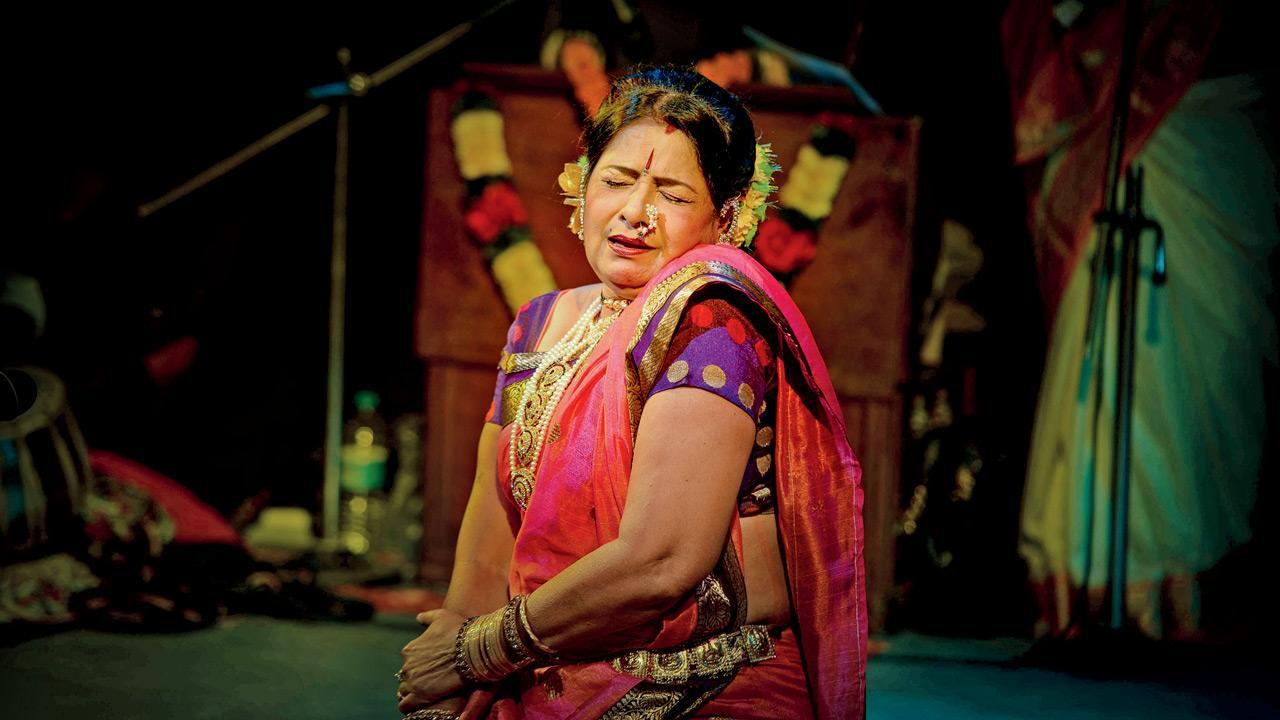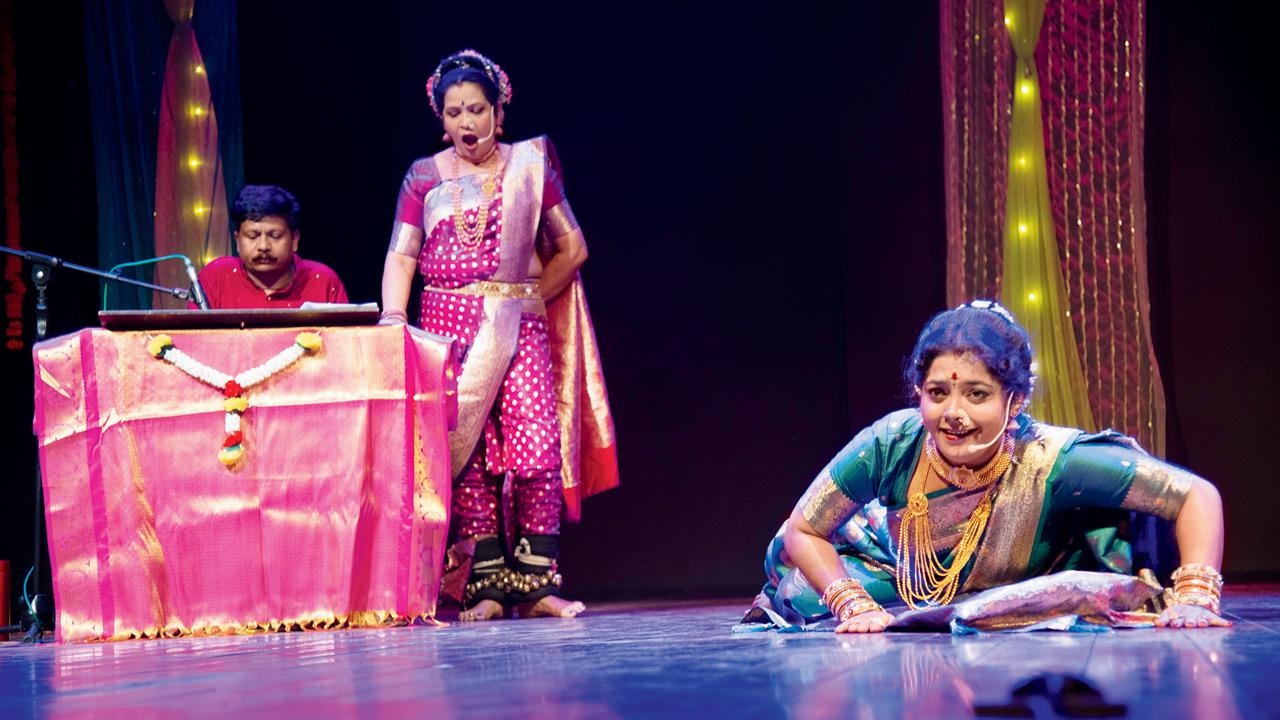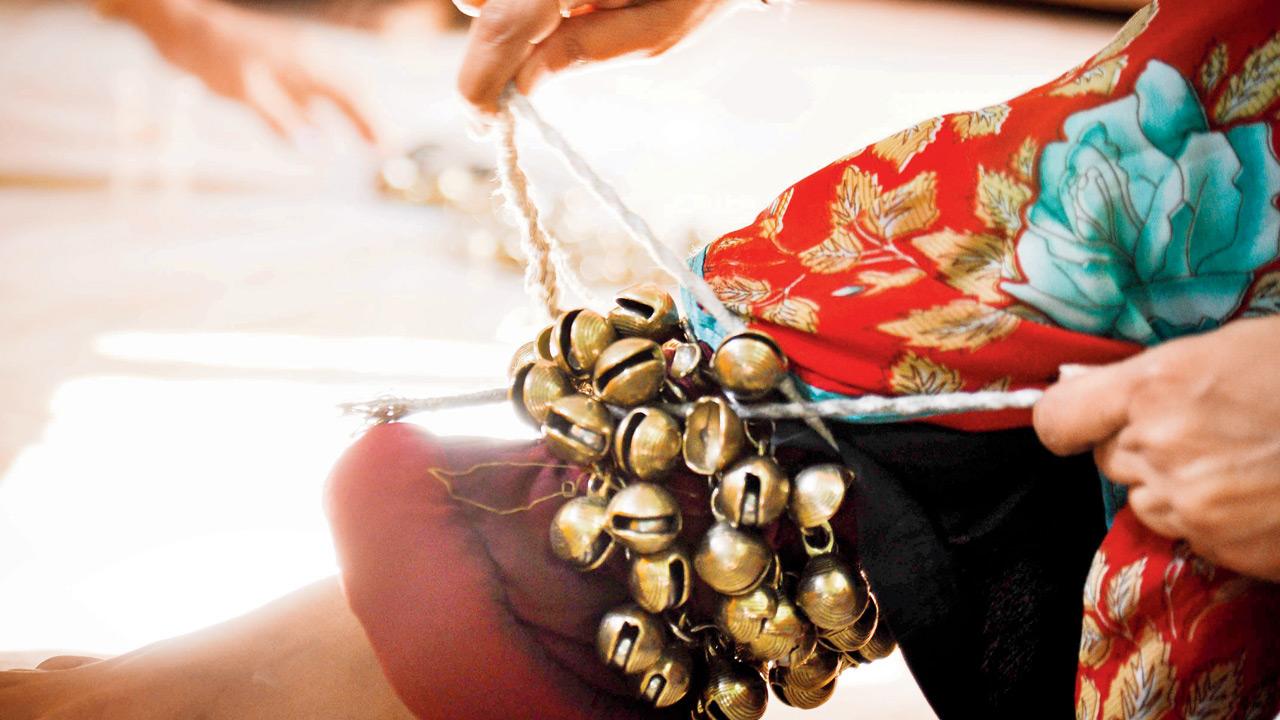Sangeet Natak Akademi-awardee Shakuntalabai Nagarkar returns to Mumbai for a series of workshops as part of Lavani Week. The icon recaps her illustrious career

Shakuntalabai Nagarkar emotes during a performance on stage
For years, the art form of Lavani has been looked down upon, often unfairly. For a folk-art form that traces its roots to the 18th Century, it still has a niche audience. Shakuntalabai Nagarkar has sought to change it over the last five decades. Growing up in the Bhatu Kolhati community, Nagarkar learned from her mother, Chhabu Bai Nagarkar, who stepped on to the stage. “It was not an easy world back then. There were struggles, but the art form was enmeshed in village life,” she recalls over a phone call from Pune.
ADVERTISEMENT

(From left) Chandrakant Lakhe, Pushpa Satarkar and Gita Waikar at a performance of Love & Lavani. Pics Courtesy/Kunal Vijayakar
The Punekar will helm workshops at Bandra and Juhu venues as part of the Lavani Week. “It is not an easy dance form. But the girls today are skilled and quick to learn,” the veteran remarks. The workshops, co-hosted by theatremaker Bhushan Korgaonkar, are also a sign of the changing perception of the art. “Even women looked down upon lavani performances. But slowly, artistes like Surekha Punekar and myself, among others changed that,” she adds. A glimpse of their lives, and art will also be on display as part of a vibrant photo exhibition.
Silk and steel
For Nagarkar, the stage was always going to be her world. She had grown up learning the songs, and watching performances. “My mother insisted I learn Kathak to strengthen my footwork. I remember learning it to understand the movement,” she reveals. Her first performance was in 1971 at Parli Vaijnath in the Beed district. “The audience was perceptive. Tamasha and Lavani were the only forms of entertainment. There was no cinema going culture then,” the Sangeet Natak Akademi-awardee recalls.

A frame from the photo exhibition
Much later, she would join the New Hanuman Theatre Troupe in Lalbaug. “I have watched performances at Shivaji Park, in the Pila Haus [PlayHouse theatres of Kamathipura] in Grant Road. Even in Mumbai, the audience understood and encouraged the art; the sangeet and the taal,” Nagarkar explains.
“We insisted on Baithaki Lavani [a form of Lavani that involve a focus on expression and music] rather than the other controversial forms.” This did not always bode well. “You learn to deal with it,” Nagarkar laughs, reminiscing over times when the audience would correct their movements. “I would simply turn to them and say, ‘Why don’t you show me?’, and sometimes they would. We would watch, and say amongst ourselves, ‘That’s actually not bad,” she reveals, with her signature sass.
Skill and style
Over centuries, Lavani has evolved into many forms such as Shringarik Lavani [expressive dance], Padachi Lavani [performed as a theatrical performance], Nirguni Lavani [a philosophical performance], and Baithaki Lavani. In recent years, it has acquired an interest across genders, and sparked scholastic studies too. However, it still relies on artistes with skill and charm.
The latter is Nagarkar’s forte. At 65, she retains the seamless ability to transform into a playful, flirtatious muse the moment she steps onto stage in full regalia. “Lavani is all about shringar and abhinaya [beauty and expression]. I have watched, and been spellbound by Lavani artistes who never moved around the stage. They could cast a spell with just their eyes.”
This ‘adaa’, Nagarkar explains, is more important than any technical move. “You may look beautiful, but if you lack adaa, what is the point of that beauty? This is the little nuance I try to teach anyone who wishes to learn,” she smiles.
ON April 12 and 13, 10 am (BKC); April 17, (Juhu), 7 pm
AT NMACC, BKC; Prithvi Theatre, Juhu.
LOG ON TO nmacc.com; prithvitheatre.org
CALL 9892009357
Cost Rs 600 (for workshop)
Lavani in the city
Rang Birangi Lavani
(Dynamic modern stories told in Lavani form)
ON April 11; 7.30 pm
AT NMACC, BKC.
Lavani photo exhibition
ON April 17 (all day)
AT Prithvi Theatre, Juhu.
Lavani ke Rang
(A show about the world of Lavani dancers)
ON April 17; 5 pm
AT Prithvi Theatre, Juhu.
Love & Lavani
(A musical on the life of artiste Shabana Ashturkar)
ON April 17; 8 pm
AT Prithvi Theatre, Juhu.
 Subscribe today by clicking the link and stay updated with the latest news!" Click here!
Subscribe today by clicking the link and stay updated with the latest news!" Click here!







